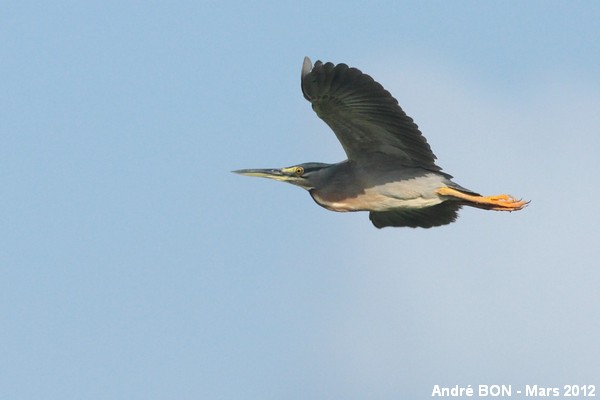
| Striated Heron (Butorides striata (Linnaeus, 1758)) |

|
|
Scientific name: Butorides striata (Linnaeus, 1758) Common name: Striated Heron Other names: Little Heron, Mangrove Heron, Green-backed Heron. French name: Héron strié Order: Pelecaniformes Family: Ardeidae Size: Body size: 35 to 48 cm; Wingspan: 52 to 60 cm; Weight: 150 to 250 g. Habitat: Wooden areas or with dense vegetation bordering fresh or salt water. The mangrove is one typical habitat for the Striated Heron. It may venture through open areas to look for food. Food: Fishes, amphibians, water insects but also other insects, spiders, reptiles and small mammals. Nesting: The nest is a platform in a tree or in a bush over water. It is generally built at the beginning of the rain season if there is one. There are 2 to 4 eggs per clutch. Migration: Populations in the north and in the centre of the United-States move southwards in winter, just like populations in the east of China. Geographic area: In America: United-States, Central America, South America except in Chile and in the extreme south of Argentina. In Africa: From the south of the Sahara to South Africa, Madagascar. In Asia : Pakistan, India and all South-east Asia to Japan. In Oceania: Coastal regions in the north and in the east of Australia, Pacific Islands. There are 20 subspecies. |
The Striated Heron is a small stocky heron with no long neck. The sides of the head, the neck and the underside of the body are grey. The cap and the crest which appears during the breeding season are black. Colours vary depending on subspecies. The neck can show some rufous feathers on the front side. The upper side of the body may vary from dark green to dark grey. You often observe solitary birds, perched in wait on the vegetation bordering water. |
| [To know more about the Striated Heron] [Top] |

|
I have shot this picture in the marshes of Caw. |